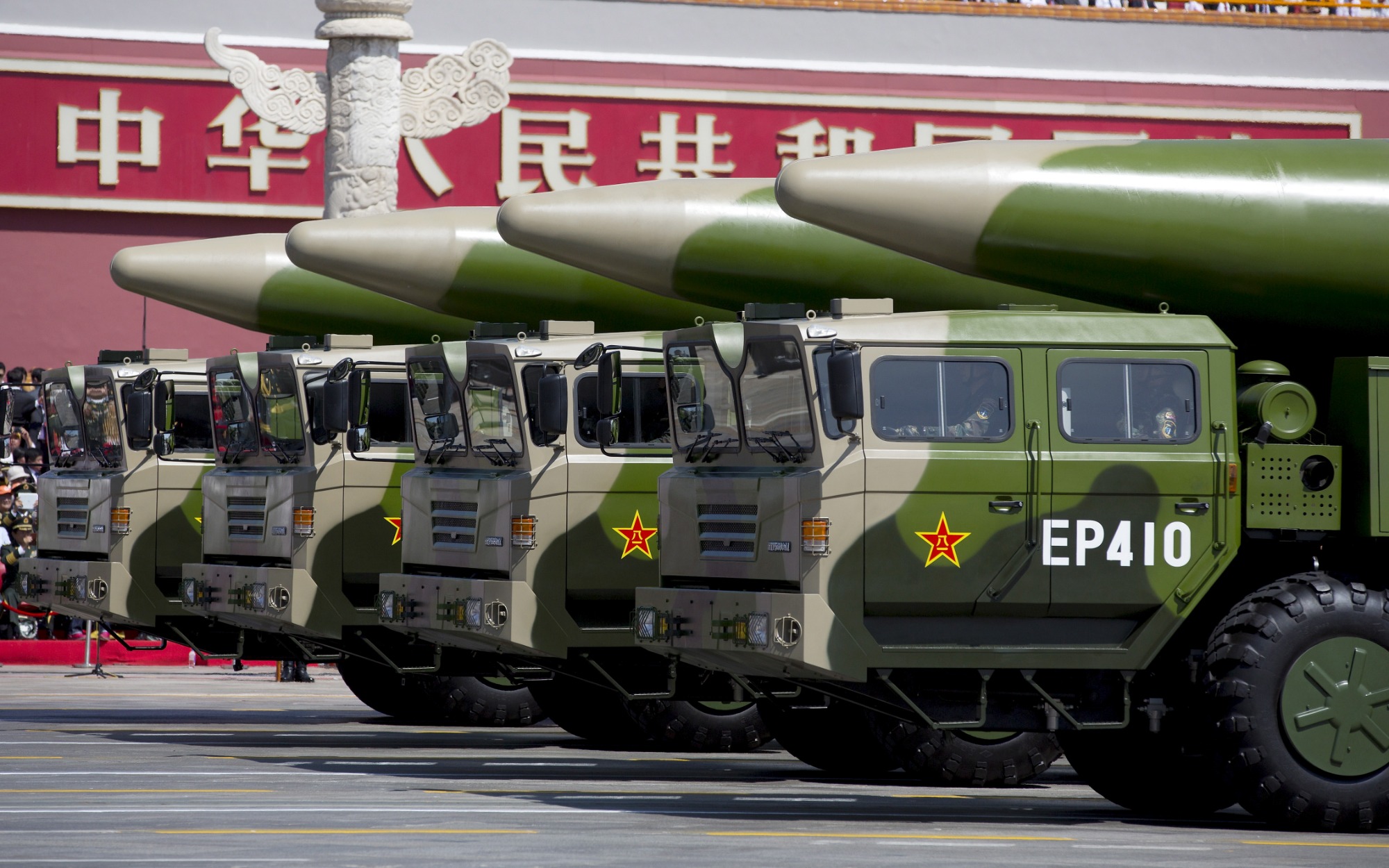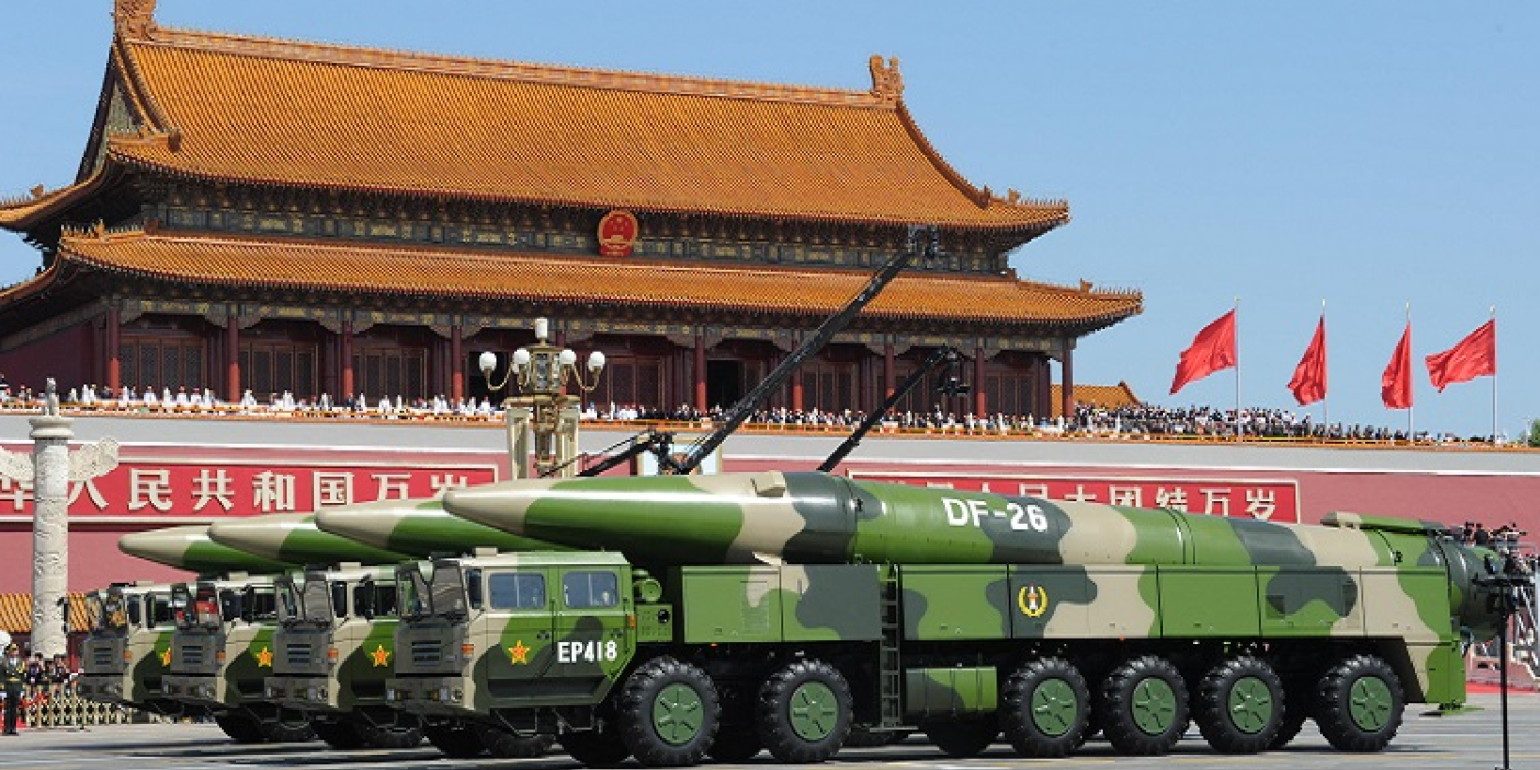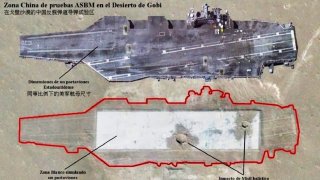China’s DF-26B Missile is a Real Aircraft Carrier Killer
The Houthi rebels in Yemen, supported by Iran, have developed a growing threat to the U.S. Navy through the deployment of anti-ship ballistic missiles (ASBMs). These systems are likely supplied by Iran and may be influenced by Chinese technology, as China likely uses the Houthis as a testing ground for ASBM systems.
What You Need to Know: The Houthi rebels in Yemen, supported by Iran, have developed a growing threat to the U.S. Navy through the deployment of anti-ship ballistic missiles (ASBMs). These systems are likely supplied by Iran and may be influenced by Chinese technology, as China likely uses the Houthis as a testing ground for ASBM systems. The Houthis’ ability to disrupt U.S. naval operations in the Red Sea is a preview of how China could employ similar tactics in the Indo-Pacific. China’s extensive A2/AD capabilities, including the DF-26B, pose a significant challenge to U.S. naval power projection in the South China Sea.

China's DF-26B Is a Threat to the U.S. Navy
When one thinks of the Houthi Rebels in Yemen, one probably imagines a cave-dwelling, AK-47-wielding foe who is more of a threat to themselves than they are to anyone else. Let alone a threat to the world’s superpower.
Unfortunately, the Houthis have perfected a set of capabilities that make them a serious, and growing, threat to the United States Navy. The development and deployment of anti-ship ballistic missiles (ASBM) has seriously complicated the U.S. Navy’s ability to project power into the critical waterways of the Strait of El-Mandeb and the Red Sea.
Yet, few seem to inquire as to where the Houthis are getting these weapons that are holding the U.S. Navy hostage.
It’s likely Iran. But where is Iran getting these systems from?
All Roads Likely Lead to Beijing
Indeed, the Houthis are likely serving as China’s ASBM testers. The lessons learned from the Houthis in using ASBM to keep the U.S. Navy away from contested regions are undoubtedly being studied by Chinese forces and applied to their region of the world.
China’s DF-26B is the primary ASBM system that China has. Unlike the Houthis, China can mass produce these systems and deploy them to the frontlines of the Indo-Pacific in any military engagement with the Americans in relatively short order.
In fact, in 2021, U.S. Navy Vice-Admiral Jeffrey Tussler testified to Congress about how the Chinese are “pour[ing] a lot of money in the ability to rim their coast in the South China Sea with anti-ship ballistic missile capability.”
So, if the Houthis can complicate the U.S. Navy’s ability to reliably project power into regions near their coastline you can bet that China will have little problem with keeping the U.S. Navy surface fleet over the horizon while the Chinese military runs roughshod over their region.
During his 2021 Congressional testimony, Adm. Tussler described the Chinese deployment of their DF-26B systems as highly “destabilizing.” That’s because these weapons are so effective that large swarms of them could easily sink an American aircraft carrier or any other kind of U.S. Navy surface ship. Even destroyers would not be immune.

That’s the experience that U.S. Navy Capt. Justin Smith had when his destroyer was confronted with the Houthis’ ASBM capabilities in the Red Sea. Specifically, Capt. Smith described himself as being in “disbelief” at how much of a threat the Houthi ASBM weapons were to his ship.
The quantity of China’s arsenal, and the geography from where it will be launched, all works against the Americans in any potential conflict between the two powers. The DF-26B is but one of several systems that China has developed for its comprehensive anti-access/area-denial (A2/AD) capability all of which are meant to stymie U.S. military power projection into regions that China covets.
The United States has been outpaced by China when it comes to its A2/AD capabilities in the South China Sea. It is unlikely to get any better for the Americans. The DF-26B is a surface warship killer. Should any U.S. Navy warship get within range, in the event of a conflict, it will be a bad day for the Navy.
China’s DF-26B is a serious threat that is only growing with each day.
Author Experience and Expertise: Brandon J. Weichert
Brandon J. Weichert, a National Interest national security analyst, is a former Congressional staffer and geopolitical analyst who is a contributor at The Washington Times, the Asia Times, and The-Pipeline. He is the author of Winning Space: How America Remains a Superpower, Biohacked: China’s Race to Control Life, and The Shadow War: Iran’s Quest for Supremacy. His next book, A Disaster of Our Own Making: How the West Lost Ukraine, is due October 22 from Encounter Books. Weichert can be followed via Twitter @WeTheBrandon.
All images on the page come from Shutterstock or Creative Commons.
From the Vault
Russia Freaked Out: Why the U.S. Navy 'Unretired' the Iowa-Class Battleships
Battleship vs. Battlecruiser: Iowa-Class vs. Russia's Kirov-Class (Who Wins?)


